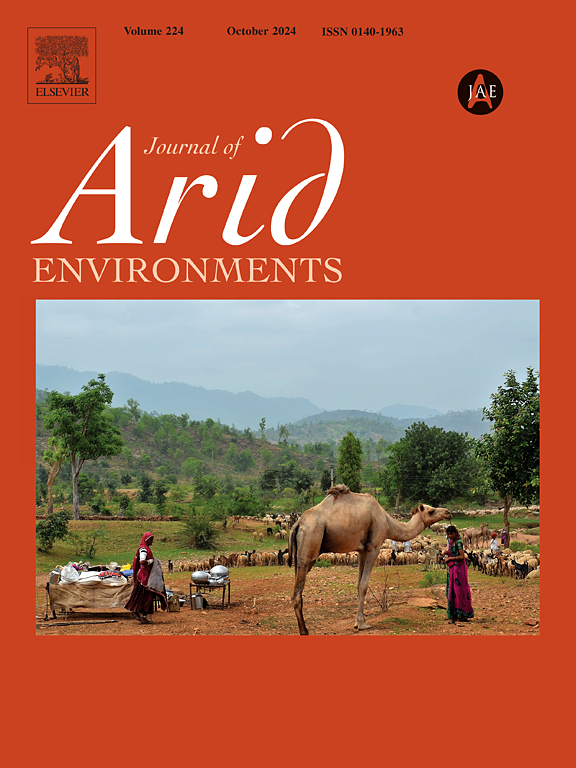一场完美的风暴:纳米布沙漠前所未有的扩张和最北端多肉的卡鲁的层层叠叠式沙漠化过程
IF 2.5
3区 环境科学与生态学
Q2 ECOLOGY
引用次数: 0
摘要
干旱地区的特点是雨量的高度不可预测性。因此,沿其边缘的生态系统自然振荡,但通常具有弹性。在这里,我们报告了全球生物多样性热点地区多肉卡鲁最北端超过100万公顷的植被、生态系统和生物多样性严重且可能不可逆转的退化。在我们的研究中,我们使用跨越45年的监测数据来理清几十年前开始的不同变化过程。Gariep粉质平原是区域内重要而脆弱的生态系统,是物种丰富的植被联盟。垫状矮灌木蝎尾(Brownanthus pseudoschlichtianus, Aizoaceae)是保护土壤和促进泥沙沉积的优势植物。受到干扰后,这种植被类型变薄,多年生植物种类减少。这使得风成侵蚀成为可能,而风成侵蚀作为一个临界点,在广大地区将粉质表土变成沙土。风成沙的移动增加导致了磨损和沉积,掩埋了大片的地貌。新开发的沙质表土被物种贫乏的草地群落入侵,部分是纳米布沙漠生物群系的典型特征。我们提出了一个新的S&;T模型,并讨论了威胁自然、农田和基础设施的级联效应。农业、采矿、道路建设和气候变化可能是相互作用的退化驱动因素。本文章由计算机程序翻译,如有差异,请以英文原文为准。
A perfect storm: unprecedented expansion of the Namib Desert and cascading desertification processes in the northernmost Succulent Karoo
Arid regions are characterized by high unpredictability of rainfall. Consequently, ecosystems along their margins are naturally oscillating but usually resilient. Here, we report the severe and potentially irreversible degradation of vegetation, ecosystems, and biodiversity in the northernmost more than 1 million ha of the Succulent Karoo, a global biodiversity hotspot. In our study, we use monitoring data spanning 45 years to disentangle different processes of change which started decades ago. The regionally important, vulnerable ecosystem “Gariep silty plains” is inhabited by the species-rich vegetation alliance Brownanthion pseudoschlichtiani. The cushion-like dwarf shrub scorpionstail (Brownanthus pseudoschlichtianus, Aizoaceae) is the dominant plant species protecting the soil and facilitating silt sedimentation. Following disturbances, this vegetation type is thinning and losing perennial plant species. This allows aeolian erosion, which – as a tipping point - turns the silty topsoil into sandy soil across extensive areas. Increased mobilisation of aeolian sand causes abrasion and sedimentation, which buries vast landscapes. The newly developed sandy topsoils are invaded by species-poor grassland communities partly typical for the Namib Desert biome. We present a novel S&T model and discuss cascading effects which threaten nature, farmland and infrastructure. Farming, mining, road construction and climate change may be interacting drivers of degradation.
求助全文
通过发布文献求助,成功后即可免费获取论文全文。
去求助
来源期刊

Journal of Arid Environments
环境科学-环境科学
CiteScore
5.70
自引率
3.70%
发文量
144
审稿时长
55 days
期刊介绍:
The Journal of Arid Environments is an international journal publishing original scientific and technical research articles on physical, biological and cultural aspects of arid, semi-arid, and desert environments. As a forum of multi-disciplinary and interdisciplinary dialogue it addresses research on all aspects of arid environments and their past, present and future use.
 求助内容:
求助内容: 应助结果提醒方式:
应助结果提醒方式:


